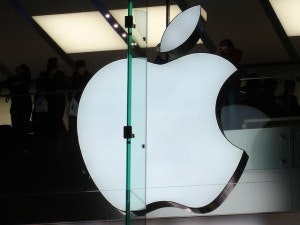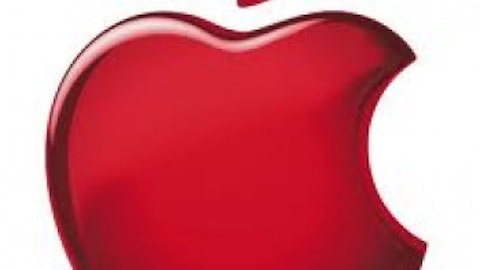
Under CEO Tim Cook, Apple Inc. (NASDAQ:AAPL) now sets more realistic forward guidance. However, the expectations to handily beat them still remain, opening up Tim Cook and Apple’s executive management to scrutiny and criticism if there is a miss in the numbers.
The April 23 earnings announcement started out well, revealing a quarterly dividend increase of 15% to $3.05 a share. Apple will be increasing its share buyback program to $60 billion from $10 billion. Apple sold 37.4 million iPhones versus 35.1 million a year ago, which was about 900,000 above estimates. Net income came in above estimates.
The stock was halted after hours in response to the results, and jumped more than 5% after Apple Inc. (NASDAQ:AAPL) resumed trading. All and all, some great news. So what happened? The stock drifted back into the red after the conference call started, so what did Apple’s CEO Tim Cook say that would cause the stock to fall?
No bigger iPhone this summer? No cheaper iPhone either?
For starters, net income was down 18% as compared to a year ago, representing the first time Apple Inc. (NASDAQ:AAPL) missed on profits in a decade. Also, Tim Cook lowered guidance and now expects lower gross margins for the next earnings period due to decreasing revenue and a different product mix.
I think that the most important item was the the lack of mention of a bigger iPhone, which was apparently due to screen quality issues and trade-offs for a bigger screen. Also, there was no announcement of a cheaper and/or smaller iPhone to compete in developing countries to grow the iPhone business overseas. Apple’s revenue is highly dependent on iPhone sales, and the next iteration, the iPhone 5, will not be available until the late summer or early fall.
Without a bigger iPhone on the near-term horizon, Apple Inc. (NASDAQ:AAPL) will let Samsung continue to increase market share across its diverse product line of bigger screens of between 5 inches and 5.5 inches.
Samsung recently announced that it will be launching two new Galaxy Mega smartphones(dates currently unknown) with screen sizes of 5.8 inches and 6.3 inches, further differentiating its smartphone product line from the iPhone platform. Will some Apple users migrate to the larger Samsung screens as smartphones become a way of life and the thirst for larger screen sizes increases?
On CNBC, high-profile short-seller Jim Chanos (who famously shorted Enron) mentioned that Apple Inc. (NASDAQ:AAPL) doesn’t spend enough money on research and development (about 3%), whereas he likes that Samsung (as well as International Business Machines Corp. (NYSE:IBM) spends about 6% of its budget on R&D, allowing Samsung to bring more products, like the Galaxy S4 and Mega, to the competitive and increasingly saturated mobile-phone market.
Google Inc (NASDAQ:GOOG) moving into the brick and mortar neighborhood
Tech rival Google Inc (NASDAQ:GOOG) will be opening retail stores at shopping malls and shopping districts in all major metropolitan areas by the critical holiday shopping season at the end of the year directly competing with Apple’s stores. These new Google retail stores will divert foot traffic away from Apple Inc. (NASDAQ:AAPL) stores, where Google Inc (NASDAQ:GOOG) will showcase its Chrome laptops, tablets, and Android phones, potentially stealing customers who otherwise would have bought an iPhone or iPad.
Rumors suggest that Google Inc (NASDAQ:GOOG) will be selling its high-profile invention, Google Glass, at these stores. Apple will need to come up with that next great innovation to mitigate the pending buzz that the Google stores and Google Inc (NASDAQ:GOOG) Glass will bring to the consumer market.

